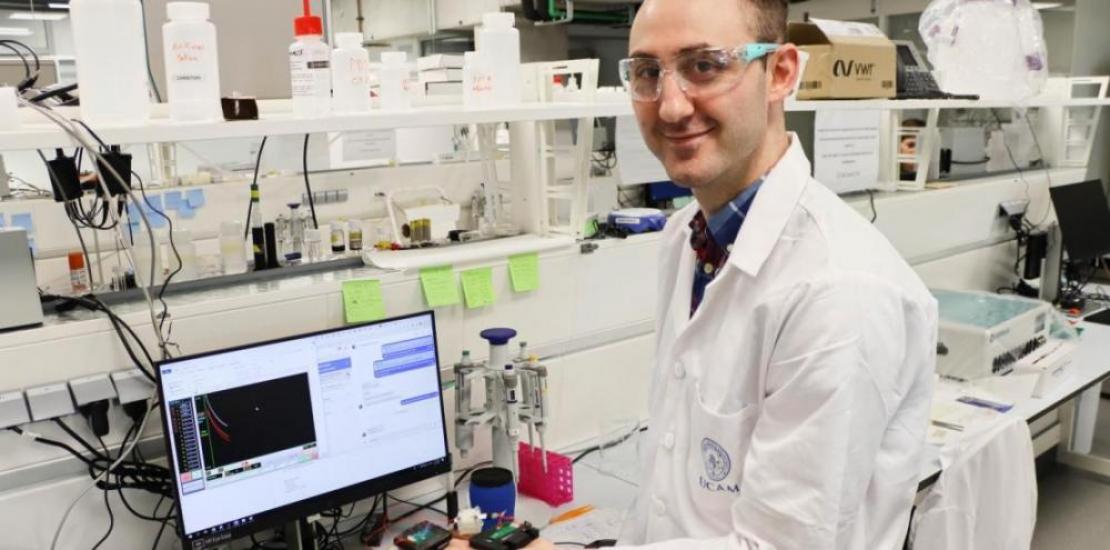UCAM-SENS develops a sensor to measure phosphates in water
The researchers María Cuartero and Gastón Crespo, directors of the UCAM-SENS research unit, published their latest innovation in one of the best sensor chemistry journals in the world, ‘Analytical Chemistry’, their work being chosen as the cover. The research has succeeded in generating a set of solid sensors which can measure phosphate levels in any water resource, regardless of whether its composition is fresh or salty in situ.
‘Currently, water analysis programmes require sampling, taking samples to the laboratory and afterwards characterisation on instruments which are expensive and require specialised personnel. We aim to bring the sensors to the sample itself and not the other way round. This will make it possible to know the quality of the water in real time, which will lead to improved action against pollution in the future based on sensor data. For example, in the Mar Menor or the Baltic’ says UCAM-SENS co-director Gastón Crespo.
This new device is expected to be the basis for real-time water analysis, which will make knowing the water quality easier and save researchers time and resources, both in sample collection and laboratory analysis. Besides, these developments will speed up future decision-making in the event of sudden changes or environmental catastrophes in water resources.
Phosphate is a very complex molecule to identify by chemical sensors. Researchers have therefore researched a basic science system which will be able to analyse varying amounts of this nutrient. The developed concept is in turn made up of two chemical processes which occur before the final phosphate measurement can be made.
‘In order to detect certain molecules, it is often necessary to mix reagents, as it cannot be directly measured. With our solid sensor-activation system, we replace the manual mixing of reagents with an automated process and apply it to phosphate in water. However, this concept may be extended to other measurements in the clinical and food field’, says UCAM-SENS co-director María Cuartero.
First, the water is acidified using electrodes which send protons to generate a pH drop. A second electrode then emits molybdenum to generate a new compound combining molybdenum and phosphate. Finally, a third electrode comes into action to electrochemically measure this compound, thus indirectly analysing the specific phosphate level in real time. All this is done automatically, in a single device which fits in the palm of your hand.




